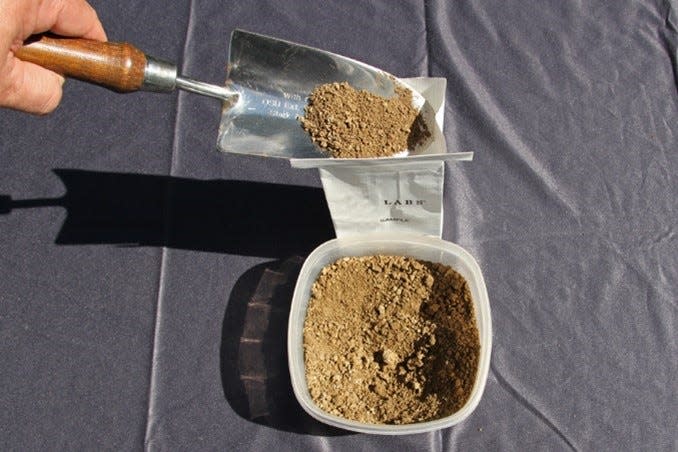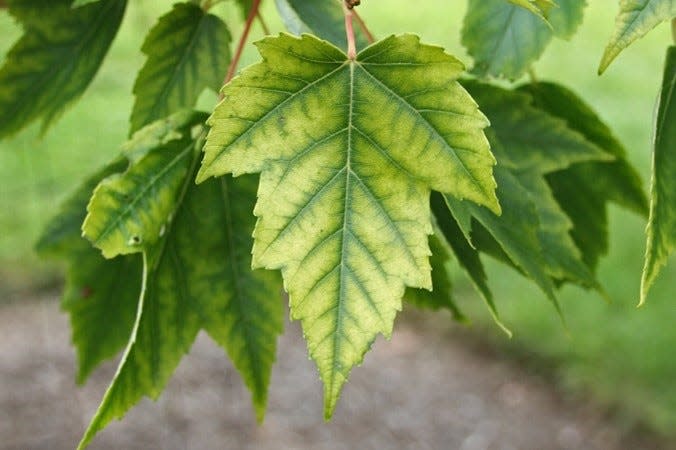Have you tested your garden soil? Here's what you should know

Now that we have experienced the first frost of the season, and the growing season for most garden and home landscape plants has come to an end, we as gardeners tend to start thinking about things we will do differently in the garden next year. We think about growing plants that we have never grown before. We think about how we can keep insects, diseases and wildlife at bay next summer. And we think about how we might increase our yields of vegetables, fruits, herbs, flowers and other ornamentals.
If you want to increase yields in your garden next summer, then one of the most important things that a gardener should think about this fall, particularly the vegetable gardener, is the nutrient and pH levels of the soil. We tend to think about soil fertility in the spring, when we are planting and fertilizing. The fall, however, may be a superior time of year to have your soil tested in order to evaluate nutrient levels of your soil, and even apply certain fertilizers and soil amendments.
The only effective and efficient method for determining how much fertilizer and lime need to be applied to your soil next spring in order to supply nutrients for a specific plant is to test the soil for nutrients, pH and even contaminants. And fall can be the best time of year to do so.
More: October is the perfect time to start a compost pile: Here's how
Why test soil
The information provided by soil tests to gardeners is sometimes compared to the information that blood tests provide to physicians. In this vein, a soil test is like a blood test for the soil. Soil tests can be used for four purposes: maintaining proper soil fertility; guiding plant selection; diagnosing plant health issues; and detecting the presence of contaminants.
Healthy plants need certain levels of soil nutrients such as nitrogen, phosphorus, potassium and other micronutrients in order to grow, flower, fruit and set seed for reproduction. The levels of nutrients in the soil fluctuate throughout the year as nutrients are removed by plants as they grow, and also through leaching. The level of nutrients in the soil typically increases as we add fertilizers, manures, compost, mulch and lime or sulfur.
Soil tests can also help gardeners and homeowners determine which plants grow best in specific soils. In many areas of Franklin County, the pH of our native soils is very alkaline, which is not the type of soil preferred by acid-loving plants such as azalea, rhododendron, hemlock and blueberries. By testing soils, we can determine which plants will grow best in a particular location.
Soil testing can also be a useful tool to diagnose plant health problems when insect, disease and other cultural conditions have been eliminated as the cause of the problem. Deficiencies of certain nutrients in the soil can cause yellowing of foliage or needles called chlorosis.
While rare in greater Columbus, when soil contamination is suspected, soil testing can determine the level of contamination.

When to test soil
Soil can be tested at any time of the year when the soil is not frozen, and samples can be collected. Fall is an excellent time of the year to have your soil tested as the growing season has ended for most plants, concluding the period when nutrients are removed from the soil by plants. Testing soil in the fall also allows you to apply fertilizers such as phosphorous and potassium and lime in the fall, so that they are completely broken down in the soil and available for uptake by plant roots in the spring. Soil testing labs are typically less busy in the fall compared to the spring, allowing you to receive results back from the lab more quickly. Soil testing should be done once every three years.

Taking soil samples
Most gardeners need only submit one soil sample for analysis, no matter the size of the garden, bed or planting area. As long as the soil is not different in color, texture or other soil characteristic in the planting area, one composite sample of the planting area is adequate. Gardeners will need to take individual soil samples from 12 to 15 random locations in the planting area in order to get a composite sample that is representative of the entire planting area. The individual samples should be collected in a bucket and mixed well to form a composite sample to be sent to the lab for testing.
More: Ready for growing season to end? Prepare by doing these tasks now
Soil testing is done by commercial testing laboratories and by university labs. Ohio State University Extension in Franklin County provides soil testing services for gardeners and farmers. For information about purchasing soil sample kits, go to go.osu.edu/franklinsoiltesting.
The only effective and efficient method for determining how much fertilizer and lime need to be applied to your soil next spring in order to supply nutrients for a specific plant is to test the soil, and fall is the best time of year to have your soil tested for nutrients, pH and even contaminants.
Mike Hogan is an Extension educator, Agriculture and Natural Resources, and associate professor with Ohio State University Extension.hogan.1@osu.edu
This article originally appeared on The Columbus Dispatch: How to test your garden soil this fall

